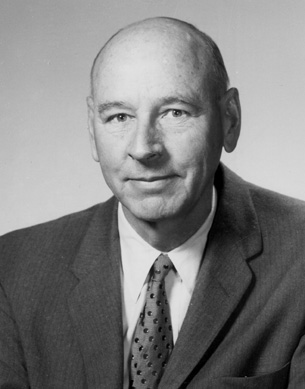
The following is an MIT biographical sketch dated October 1958. Keenan himself may have been the author. If so, it would account for the absence of a statement about his enormous impact on the teaching of engineering thermodynamics during the second half of the twentieth century. Keenan's 1941 text on thermodynamics remains a classic book on the subject. His other great legacy is the Steam Tables, to which he was a singular contributor over a period of several decades.
Joseph H. Keenan, head of the Department of Mechanical Engineering at
the Massachusetts Institute of Technology, is a noted authority on
thermodynamics, whose interests have extended to jet and rocket
propulsion and to gas turbines. 
Born in Wilkes-Barre, PA in 1900, Professor Keenan graduated from MIT in 1922 with the degree of Bachelor of Science in naval architecture and marine engineering. In 1928, after six years as a stem-turbine design engineer for General Electric Company in Schenectady, NY, he became assistant professor of mechanical engineering at Stevens Institute of Technology. He joined the MIT staff in 1934 as associate professor of mechanical engineering, in 1939 he became professor, and was appointed head of the department of mechanical engineering in 1958.
Professor Keenan is author of "Thermodynamics" (1941). He is co-author of "Thermodynamic Properties of Steam" (1936), a basic source of data for design for power and process machinery, which has been very influential in the steam-power industry. "Thermodynamic Properties of Air" (1945) and "Gas Tables" (1948), prepared by Professor Keenan and Professor Joseph Kaye, have been used extensively in design and engineering work related to gas turbine, jet-propulsion machinery, and internal combustion engines.
During and after World War II, Professor Keenan was chairman of the subcommittee on Propulsion Systems and a member of the Subcommittee on Internal Flow of the National Advisory Committee for Aeronautics. He has served as a consultant to Jabez Burns & Sons, United Aircraft Corporation, M.W. Kellogg Company and the Lima-Hamilton Corporation. Since 1929, he has patented equipment for processing coffee and cocoa, as well as devices for separating dust from gas streams.
Under a Fulbright grant in 1951, Professor Keenan delivered a series of lectures on thermodynamics at Cambridge University, England and at the Imperial College of Science and Technology in London. A fellow of the American Academy of Arts and Sciences, he has been a United States delegate to five international conferences on the properties of steam. As Executive Secretary of the USA Commission on the Properties of Steam, which reports to the American Society of Mechanical Engineers, Professor Keenan attended a meeting in Moscow during the summer of 1958, for the purpose of coordinating research on the properties of steam which is now on progress in many countries.
The ASME, of which he is a fellow, awarded him the Worcester Reed Warner Medal in 1955 for his "outstanding contribution to the permanent engineering literature in his writings on thermodynamics and tables of thermodynamic properties of steam, air and gases." He has served as secretary and as chairman of the Applied Mechanics Division of the ASME. In 1951 he received an award "for outstanding achievement in bringing about a better understanding of the American way of life" from Freedom's Foundation of Valley Forge, PA. Professor Keenan is an honorary member of the American Association of Physics Teachers and a member of the Institute of the Aeronautical Sciences, American Society for Engineering Education, American Association of University Professors, Tau Bet Pi, and Sigma Xi; also the Harvard Musical Association and the Badminton and Tennis Club, both of Boston.
Professor and Mrs. Keenan, the former Isabel Morrison, live at 11 Howells Road, Belmont, MA. They have two children, Mrs. John W. Carr III, of Ann Arbor, MI, and Matthew A. Keenan, of Pittsburgh, PA.
|
|